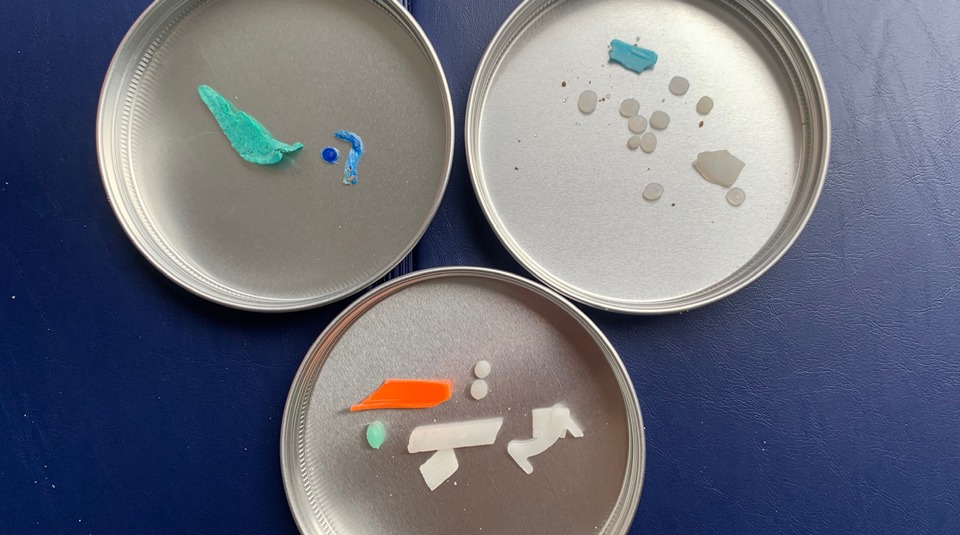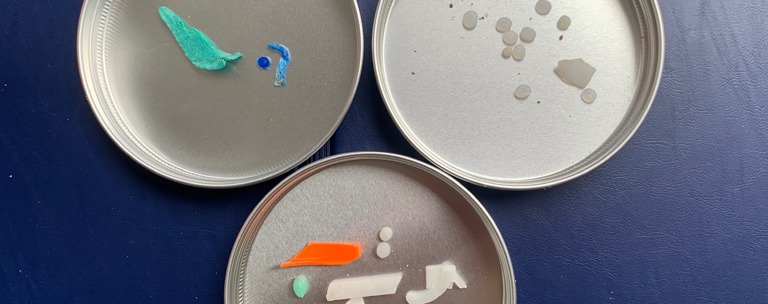Like many Kiwis, ESR microplastics expert Dr Olga Pantos headed to the sunny beaches of Te Tara-O-Te-Ika-A-Māui (Coromandel Peninsula) in January. However, unlike most beachgoers Olga was not on holiday, but was instead combing the region’s golden sands to understand how prolific microplastic particles are on Aotearoa beaches.
Based at ESR’s Christchurch Science Centre, Olga made the trip north hoping to not find microplastics in this beautiful area of Aotearoa. But unfortunately it was not the case, as while microplastics weren’t immediately obvious, Olga could see plastic on the sand when she started looking.
"Sadly it’s clear there isn’t some untouched paradise left in Aotearoa with water and sand that’s free of microplastics. We found a very aged lollipop stick so full of cracks due to environmental weathering that it was close to falling apart in to microplastic-sized fragments. We also found a plastic peg commonly used in aquaculture operations, and we were very surprised to see nurdles on remote beaches.
“Nurdles are plastic pellets which are melted down and reformed to make finished plastic products. Although there are no factories close by, the lack of any signs of significant weathering suggests he nurdles hadn’t been travelling in the ocean currents for very long,” says Olga.
According to Olga, it’s unlikely the nurdles floated from the MV Rena wreck near Tauranga given how pristine the pellets were in appearance.
“We can gauge roughly how old nurdles are by how weathered they appear, with newer nurdles being bright white or colourless and older nurdles turning shades of brown. The nurdles we found didn’t look like they’d been exposed to the elements since the Rena grounded in 2011.”
While samples Olga collected during the Coromandel trip are still being analysed, previous research looking at microplastics around Northland beaches which Olga co-led with Scion and Northland Regional Council researchers has identified microplastic contamination on remote beaches of Te Tai Tokerau – concluding that microplastics are ubiquitous in marine environments, even in areas considered to be uninfluenced by human activity.
Olga says the ubiquity of microplastics is a timely wake-up call to heed science and make those small changes that drive sustainability, and which can yield big benefits for the environment, such as using reusable cups and drinks bottles in lieu of disposable plastic-based products.
“The science is clearly and consistently telling us we need to adopt new ways of doing things that are more sustainable, and microplastics research is one vivid example.”
Olga recently spoke of this during a virtual talk with pupils from the American College of Greece.
“There were two classes in the presentation, with students aged between 11 and 12. I gave a presentation about plastic pollution for about 30 minutes, and then I answered the students’ questions for about 40 minutes. There were loads of questions so they also sent some in writing for me to answer – which is a great indicator of how interested young people are in tackling microplastic pollution.
“The students had actually been working on a piece of literature in their English class about the environment and sustainability, and our impacts on it, when their teacher invited me to give a presentation to inspire the kids more about why it is we need to make these changes. I was happy to help as it meant they got information from a scientific perspective.
“After all, you don’t need a lab and a microscope to see microplastics and to work out just how widespread the problem is – you can probably find nurdles and other microplastic pollution at a beach near you,” says Olga.

